The history and technology of modern hearing aids
As we round the corner of 2021 we find ourselves in a new technological age, where every day we edge closer to making the science fiction of yesterday a reality of today. Think back to the impossible “communicators” of the early Star Trek series, and how now every one of us carries such a device in our pockets today.
The Audiology industry is no different, and here at Nathan Gluck Hearing Care we are amazed by the leaps and bounds being made available to our patients with each new generation of hearing aid. To fully understand their magnitude however, we have to go back to the very beginning.
13th Century – The first documented use of a “hearing aid”
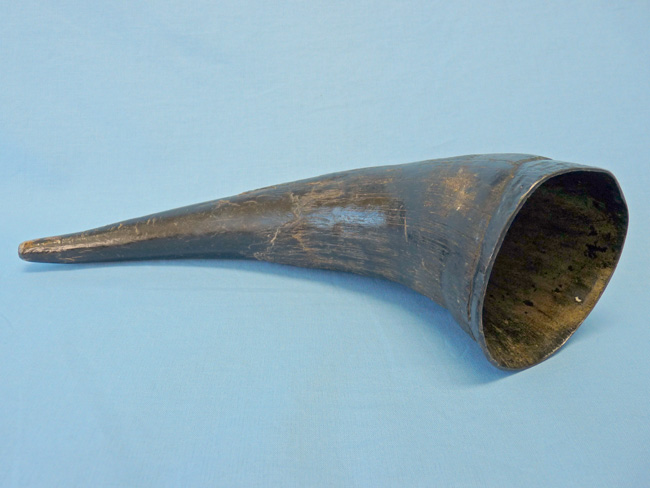
As long as humans have existed, there have been those of us that struggle with hearing. We have always found a way to get around this however, and this is where the relationship between our ability to send communications further and to receive them more effectively begins.
In the earliest documented examples of a hearing aid our ancestors took the favoured calling device of the day, the horn, and turned it into a way to increase their hearing. Our Medieval pioneers took the horns of cattle and livestock, and fashioned them into the first rudimentary ear trumpets.
Whilst these horns will have delivered nowhere near the sound quality of today’s offerings, as the pinnacle of hearing technology for the age their users must have been amazed at the sudden improvements these devices would offer.
18th Century – The ear trumpet
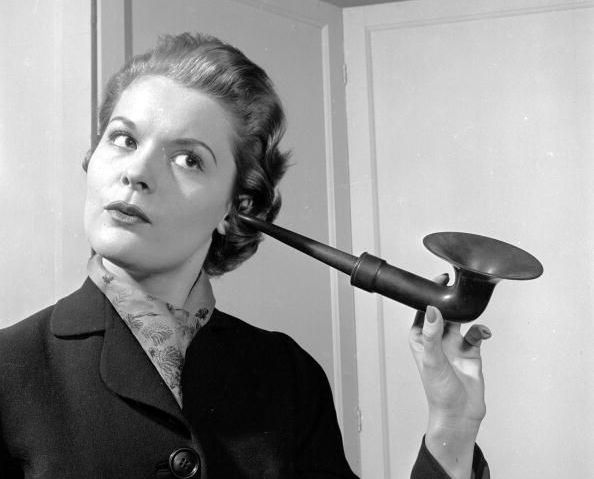
For half a millennium the core concept behind the hearing aid didn’t change, but the materials used to create them were refined. In the 1700’s the first dedicated “ear trumpets” were observed, made from newer complex materials like brass and copper.
As the materials were improved so were the designs, building on the natural shapes of the horns that preceded them and the understanding of how they worked. Featuring large cones to capture sound, metals tuned to allow sounds to reverberate within them and reducing to small ear pieces to focus the sounds into the ear, the ear trumpet was the first example of a targeted and optimised way to improve hearing.
19th Century – Electricity sparks a new era of hearing aids
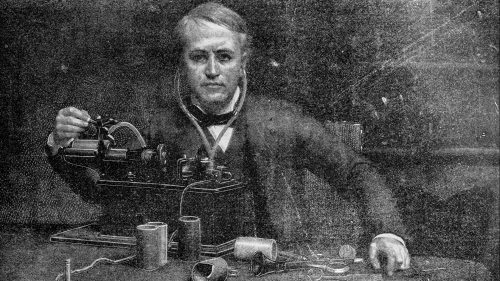
As the horn before it gave birth to the ear trumpet, the telephone caused a paradigm shift in the way we corrected our hearing problems. With the invention of Alexander Graham Bell’s groundbreaking communications device, we saw the beginnings of the modern hearing aid.
Fellow victorian era inventor and hearing loss sufferer Thomas Edison realised that the conversations he had over the telephone were often clearer to him than those he had face to face, and he set to work capitalising on this fact. Once again using the communications device as his foundation, Edison invented a new technology called a carbon transmitter which served to boost both the electronic signal of sound, and the decibels that were outputted to the listener.
These devices were crude by today’s standards, with limited frequencies that could be amplified along with distortion in the sound quality, but in the mid 1800’s this must have felt like space age technology.
20th Century – The technological revolution begins
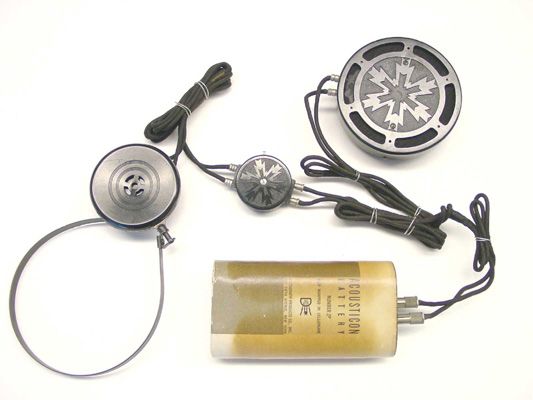
With the foundations laid by the trailblazing inventors of the previous century, and the war machine of two global conflicts forcing countries to get smarter and more advanced in order to best each other, our understanding of electronics grew exponentially.
As portability became essential for wartime communications, the ability to make devices smaller found a whole new meaning in peacetime. The invention of transistors and vacuum tubes made the hearing aids of the day smaller, more discreet and far more efficient, allowing hearing loss sufferers to go about their lives far less encumbered by their disability.
In the postwar years and towards the end of the century space age technology truly became a reality, we put astronauts on the moon, flying became affordable and the first digital hearing aids came to life. These new units allowed users to program and adapt them for the world around them, and hearing aids became truly available to the masses.
21st Century – The naughties
As the rate of technological advancement jumped from rapid to eye watering, so did the standard of hearing aids being made available. In the first decade of the 21st century wireless connectivity began to appear, reprogramming became even smarter and more refined and we see the first signs of an infant artificial intelligence being used to process the sounds in the world around it, and translating it’s knowledge into a new generation of smart hearing aids.
21st Century – 2010 and the internet of things
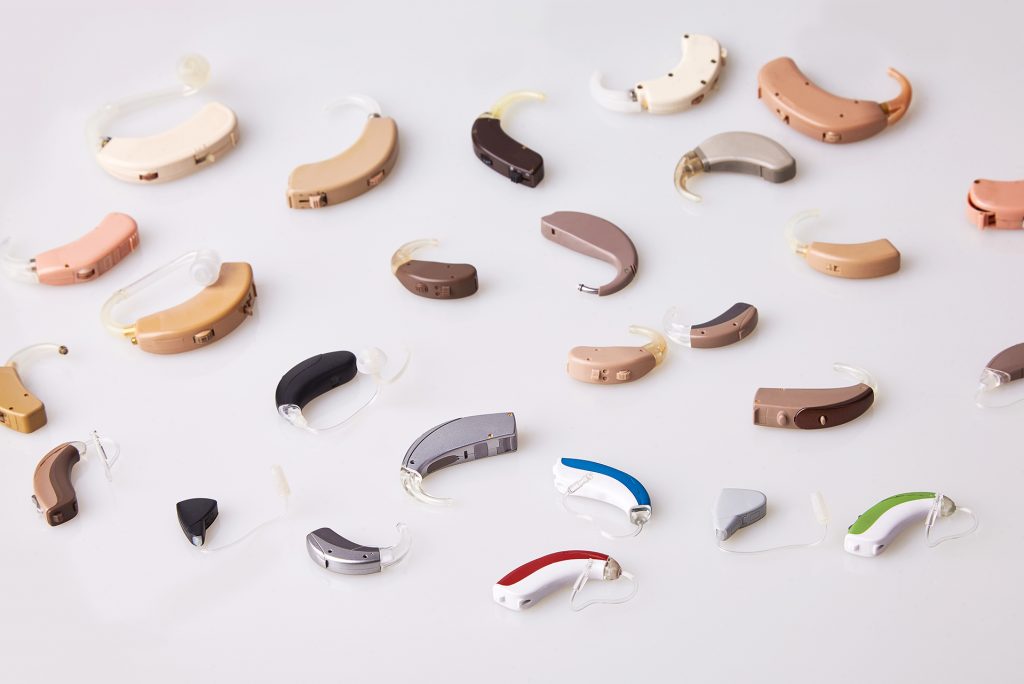
In the last decade our Star Trek communicators have become an essential part of our everyday lives, leading to a whole host of smart products and utilities that can connect to them. Hearing aids took to the concept of “an internet of things” like a fish to water and found themselves a place in the network of devices all connecting together to improve our everyday lives.
Made for iPhone hearing aids were some of the first products designed specifically around connecting with our smartphones. Utilising the hearing aid as both headphones and a hands free set, some could argue that they give the wearer a more convenient telephone phone experience than someone who would have to remember to carry their headphones with them.
AI reared its head again, now in its teenage years it was not only providing a more natural and complete sound experience to the wearer but was also being employed to measure the wearer’s health and wellbeing. In extreme cases, some AI enabled hearing aids could even learn when the user had had an accident or fall, by using tiny gyroscopes to detect when someone had suddenly performed a motion outside of their usual routine, and alerting emergency contacts straight away.
Today’s hearing technology
Riding the wave of technological advancement in today’s world our hearing aids are smarter than ever. Even with the crisp, near lifelike sound now available in almost all modern hearing aids there is constant improvement being made within the industry.
This year alone, leading manufacturer Oticon have taken the AI technology they pioneered in the first years of the 21st century and have now revealed it to have developed into what you might call an adult, having experienced over 12 million sound scenes. This new technology is the next step in making hearing loss a mild inconvenience rather than a burden, by changing the way the hearing aid processes sound.
Whereas before the approach was to simply amplify the sounds taken from a given direction, creating an almost “flat” tone in the user’s ear, the latest generation of hearing products have learned to take the entire sound scene and identify what the user needs to hear, and what they don’t. This level of intelligence is similar to the sound experiences we gain as we grow up, and as a result the sound given to the listener is as close to “the real thing” as we have ever been, with early users reporting that the devices are like nothing they’ve used before.
The internet of things concept has also blended into the norm, with today’s hearing aid connecting to almost any smart device. With today’s technology you can listen to your television directly through your hearing aids, hear the front door ringing, directly to your hearing aids, and even be informed if an alarm has been triggered, helping to keep you safe from the likes on an intruder or fire.
Not only are today’s hearing aids technologically impressive, they are also smaller and more discreet than ever before allowing the wearer to be free of any self consciousness. The bounds made in battery technology also mean that the latest generation of hearing aids can take on the day with you, and are not something you have to worry about dying on you when you need it most.
Take advantage of this technology yourself
Here at Nathan Gluck Hearing Care we’re proud of our independent status as professional audiologists, as it means we can offer the best and most up to date technology to our patients without any bias or loyalty to one manufacturer or another.
Our North London hearing specialists are here to help you discover which of today’s many offerings are right for you. By booking a hearing test with us we can ascertain exactly what your hearing needs are, and when compared with the features you value in your daily life, we will find the product that will make an improvement, not become a burden.
Hearing tests are available at our Golders Green practice 7 days a week, and we make it our mission to see 95% of our patients on the same day as their booking by staying open late until 8pm. Should you need hearing aids and cannot make it to our Golders Green practice, we also run clinics in Potters Bar, or can do home visit hearing aid or hearing test appointments.
Get in touch
If you’re concerned you may have a problem with your hearing, or you’d like to arrange a hearing test for a family member, we’re here to help.
Nathan Gluck Hearing Care,
20 Wentworth Road,
Golders Green, London,
NW11 0RP, UK